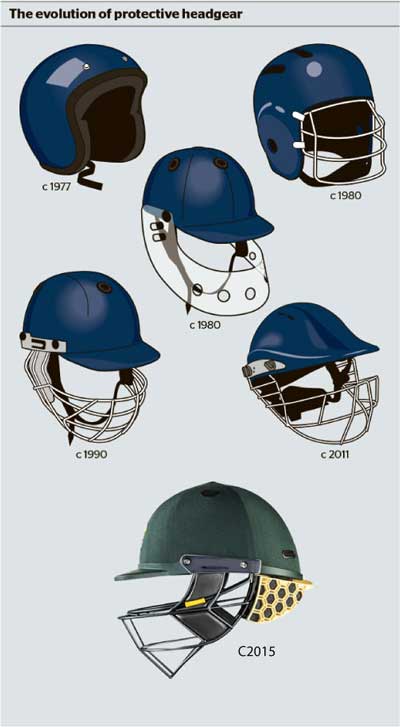Thursday Jan 22, 2026
Thursday Jan 22, 2026
Monday, 27 July 2015 00:00 - - {{hitsCtrl.values.hits}}

More often than not, we don’t realise the importance of protection until it ‘hits’ you. That is why proactively closing the protection gaps is important. In cricket, the evolution of protective gear faced much resistance and took a long time for its value to be realised.
AIA, as the real life insurer and also the Official Insurance Partner of Sri Lanka Cricket understands that sports and life go hand in hand. Safety and protection is vital to both. That’s why over the years in many sports, the ‘protection gear’ has evolved-so as to minimise the protection gaps that could, at times be detrimental.
It doesn’t take extraordinary intelligence to understand that the brain is one of your most important organs. However, the first cricket helmet was invented 100 years after the testicular guard? It took that long to realise that the brain was important too!
Hits on the head by the deadly missile of a cricket ball has caused many deaths. Raman Lama, Abdi Aziz, George Summers, Ian Folley, Darryn Randall and more recently Phillip Hughes were all unfortunate victims.
It is ironic that the helmet was so slow to pick up as a form of protection considering that fast bowlers bowl at speeds over 90 miles per hour! England’s Patsy Hendren was the pioneer of the helmet with his homemade contraption in the 1930’s but it took the rest of the cricket world more than 40 years to catch up.
In 1977, Englishman Dennis Amiss was made fun of by Australian crowds when he debuted his customised fibre-glass motorcycle helmet. He was quoted in a 2005 Telegraph interview as saying, “When World Series Cricket began I knew that I would be facing a lot of Australian and West Indies bowlers who would be delivering the ball at 90mph (145kmh). I went to a motorcycle helmet manufacturer and he came up with something lighter than the fibreglass motorcycle helmets around in those days and had a visor that could withstand a shotgun blast at 10 yards.”
Notably, the visor stopped a delivery from South Australian paceman Wayne Prior from knocking out Amiss’s teeth!
Soon players such as Sunil Gavaskar, David Hookes and Zaheer Abbas started wearing helmets. They would rather face teasing from the crowd than a pace bowling attack without a helmet. From then on the helmet gained popularity and designs were frequently refined to enhance protection.
The advent of the helmet has not only saved many lives but also reduced the anxiety of parents whose kids play cricket. In fact, the lesson learnt from the cricketing helmet story is that though people may not realise the importance of or the need for protection, it doesn’t make it any less important. It’s the same for life. Just because you don’t realise the importance of protection, doesn’t mean you don’t need it. Just because nothing has gone wrong, doesn’t mean it never will.